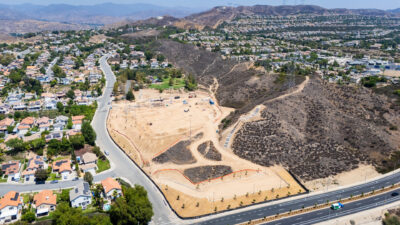Question: I live in a Valencia custom-built home from 1980 on a half-acre lot. I’m the fourth owner who inherited a 4-inch diameter PVC plastic drainage system. There are five different drains that run to outlets in the curb at the front of the property. My problem is a plugged drain line that showed up with the first rainstorm of 2025.
It comes after a large wood patio deck and stucco repair work at the back of the house. I suspect sawdust, mud, etc., created the blockage somewhere within 25 to 30 feet of the construction. This line has four different openings in the concrete deck.
My first issue:
What is the best method for removing the plastic 4-inch diameter grate cover piece to access the drainpipe? They are not glued but rather they slip into the plastic riser from the drainpipe. I understand no tool is made to remove the covers, but they all appear to be stuck from being in place for so long.
My second issue:
What do you recommend using as a “snake” to work in the pipe about 10 feet between each drain cover? It’s a tight bend to start some type of wire, etc., to clear between drain covers. I hope my question is clear. Thanks in advance for your input.
— Ron
Answer: Ron, thank you for writing in and being a loyal reader of The Signal. To answer your first question: To remove the drain covers, you may need to break them to remove them. These are PVC and get locked in after many years of sitting. They are inexpensive to replace at the local box store.
My strongest recommendation is to use a small snake while being careful to not force the cable, so as not to damage the pipe. Should you force the cable it could cut a hole in the wall of the pipe and then you are introducing mud into the equation. If you have no success with the cable, then I’d call in a plumber with a camera to see exactly where the backup is located.
Worst-case scenario, it would be that you may have to saw cut the concrete deck to access the area that is obstructing the drain. I’d start at the street and work your way back toward the rear of the property and see how far you get. Then, you can go to the rear and try from back there. Be careful NOT to damage the pipe, don’t force the cable.
I’m a firm believer in maintaining the drains annually to prevent something like this from happening.
Another thought: When you are cleaning your pool filter (if you have a DE (diatomaceous earth) filter, be sure not to introduce the DE to the drains. The DE will harden and turn to a substance like concrete. Many people make this error, and this causes backups that cannot be cleared even with a cable machine. Best of luck.
Robert Lamoureux has more than 40 years of experience as a general contractor, with separate licenses in electrical and plumbing contracting. He owns IMS Construction Inc. in Valencia. His opinions are his own, not necessarily those of The Signal. Opinions expressed in this column are not meant to replace the recommendations of a qualified contractor after that contractor has made a thorough visual inspection. Email questions to Robert at [email protected].












